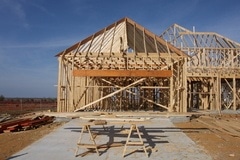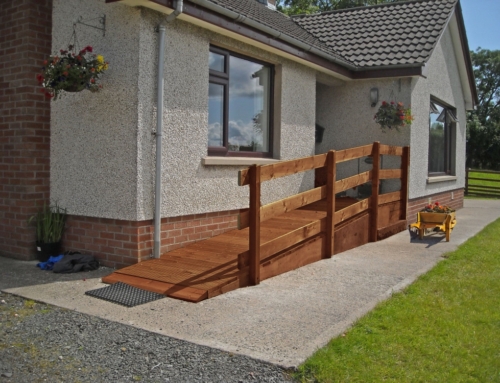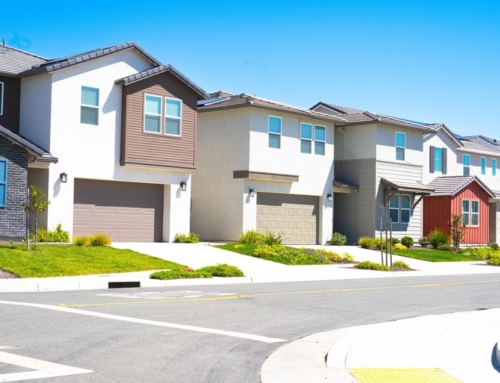My mother said something interesting to me the other day. She said, “The Realtors in my office are much busier than they were two months ago. They’re doing real deals.”
This would be just another one of those passing comments except that my mother works for the top Baird & Warner office in downtown Chicago. She has been one of the top Realtors in Chicago for the past 27 years, and in addition to doing deals even now (at age 71), she’s also teaching other agents in the firm how to do their jobs in a better, smarter way.
So when my mother, Susanne Glink, says that agents in her office are doing deals, it’s worth paying attention. That said, it’s not like 2005 all over again. There is an abundant supply of unsold condominiums, and condos that have been put back on the market again by developers frustrated by buyers who have walked away from their deposits, and condos, single family homes and townhomes in foreclosure all waiting for someone to step up and plunk down some cash.
And then there’s all of the commercial real estate that’s going unsold, unrented, and undeveloped. In the building where I have our ThinkGlink headquarters, the building owner told me recently that he sees an increase in leasing activity. Indeed, there’s a mortgage broker moving in across the hall, who has combined two offices into one. The building owner tells me that activity is up because people who were in 6,000 square feet are figuring out that they can do more with less and are deciding to look at (and lease) 2,000 feet while giving up the larger, more gracious 6,000 square foot offices.
This isn’t a time for graciousness, either in residential or commercial real estate. It’s about surviving until life gets better – hopefully somewhere in 2010.
For everyone else who is playing along at home, here are 5 Ways to Know that the Real Estate Market is Improving:
#1 The Number of For Sale Signs Starts to Shrink in Your Neighborhood.
If you have a sea of “for sale” signs littering your neighborhood, it’s hard to imagine what could happen to make those disappear. Well, once those properties start selling, the property owner, bank or Realtor will take down the “for sale” sign. Walk or drive around your neighborhood and count the signs. Then, do the same thing next week. At some point, you’ll notice fewer signs which means inventory is going down in your area. You can also do some of this electronically, but going online to Realtor.com and other real estate listing sites that allow you to search for houses for sale by price and location.
#2 Your Realtor Takes More Time to Return Your Phone Call.
These days, it’s easy to get your Realtor’s attention. Any Realtor worth his or her salt will bend over backwards to give you exceptional customer service because that’s what you do when a market has almost ground to a halt and you want to keep every customer you have completely happy. But the day will come when your Realtor takes a little more time to answer your calls and emails. And you should welcome that delay (well, a little) because it’s the sign of a healthier real estate market.
#3 The High Cost of Financing or Refinancing Real Estate Drops.
Right now, loan fees are about as high as I’ve seen them in the 20+ years I’ve been writing about real estate. I’m not sure what lenders are thinking other than this is a great way to pad their profits in a tough market. And their first quarter numbers (1Q2009) are really showing the strength of the refinancing market. But competition will come into play again, as the residential real estate market bounces off the bottom of this very deep trough. When it costs just 1 percent in loan fees to finance or refinance your property, you’ll know that the credit markets are gaining strength.
#4 The Pace of Foreclosure Filings and the Number of Homes in Foreclosure Falls.
The number of foreclosures is still rising quickly. One of the signs that the real estate market is improving is reducing the pace of foreclosure filings from banks and reducing the number of homes foreclosure. There are two ways for that to happen. First, homeowners have to make their mortgage payments on time and do whatever they have to do to get their mortgages modified to a reasonable and affordable amount. Second, lenders need to push more homes through the foreclosure tunnel so they can get them out and sold on the other side. Only when the pace of foreclosure filings and the total number of homes in foreclosures falls will we be able to put a floor on the housing market.
#5 Housing Prices Stop Falling.
The news this week that homes in Arizona have fallen more than 50 percent in value since the top of the market was at best depressing. While home valuations haven’t been damaged that much elsewhere (Arizona was the first to hit the 50 percent mark), everyone has taken a bath as the housing bubble has burst. But before housing prices can rise, they’ve got to stop falling. And that will only happen when the number of buyers increases to create a more balanced real estate market. What’s helping there? The $8,000 first-time home buyer tax credit. But it ends on December 1, 2009. Will it be extended? That’s got to be one of the options the Obama administration is looking at. There has to be some motivation other than the lowest interest rates in 50 years, to help sop up all of the housing inventory that is currently for sale.
Are there any other signs you’d add to this? Please leave your comments here.







Leave A Comment